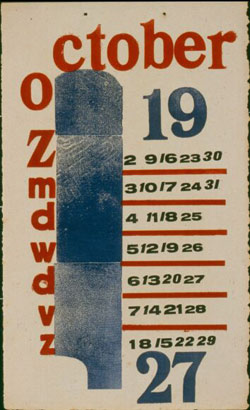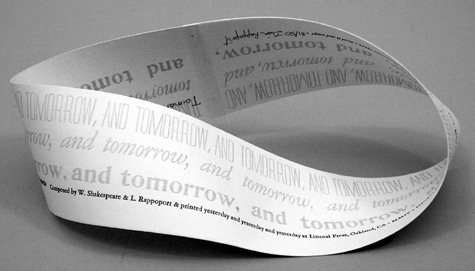
I’m printing my 2008 calendar design on my hand-feed, manually operated (using a foot treadle) letterpress printer. The calendar has 14 pages, 2 colors each. This ends up to be a lot of feeding and a tremendous amount of treadling. It’s not a particularly mindless task, as I have to pay attention so that my hands don’t get caught as the platen opens and closes, that the paper is straight, and most importantly that the ink is consistent across pages. Once I get a rhythm going, though, it turns out to be a pleasant way to spend an afternoon, especially with a bit of music on the radio or through my ipod.
 While printing I’ve been thinking about calendars I’ve particularly liked. The one pictured in this post is by Lisa Rappoport of Littoral Press from 2005. It’s really more of a mediation on time, I guess, and it perfectly matches that repetitious feel that I have spending my afternoons treadling. (Kate Godfrey took the picture.)
While printing I’ve been thinking about calendars I’ve particularly liked. The one pictured in this post is by Lisa Rappoport of Littoral Press from 2005. It’s really more of a mediation on time, I guess, and it perfectly matches that repetitious feel that I have spending my afternoons treadling. (Kate Godfrey took the picture.)
To-morrow, and to-morrow, and to-morrow,
Creeps in this petty pace from day to day,
To the last syllable of recorded time;
And all our yesterdays have lighted fools
The way to dusty death. Out, out, brief candle!
Life’s but a walking shadow; a poor player,
That struts and frets his hour upon the stage,
And then is heard no more: it is a tale
Told by an idiot, full of sound and fury,
Signifying nothing.
 —Macbeth (V, v, 19)
—Macbeth (V, v, 19)
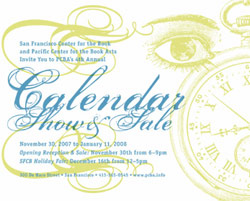 For the fourth year, the members of the Pacific Center for the Book Arts sponsor a showing of calendars during the month of December in the San Francisco Center for the Books’ gallery. The show is a celebration of the seasons, the mysteries of time, and plans for the future. My calendar will be on display, along with about 24 other entries.
For the fourth year, the members of the Pacific Center for the Book Arts sponsor a showing of calendars during the month of December in the San Francisco Center for the Books’ gallery. The show is a celebration of the seasons, the mysteries of time, and plans for the future. My calendar will be on display, along with about 24 other entries.
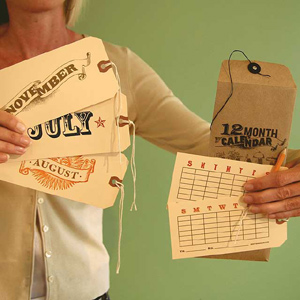



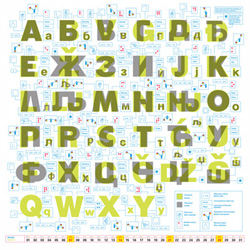 For the past several years, the Pacific Center for the Book Arts has sponsored a year-end show of calendars created by members. The theme the first year was “marking time.” That first year I started to design a calendar but got stuck trying to figure out what “marking time” meant for me. I dislike the rigidity of calendars, but I’m a notorious list maker — just as rigid as keeping a datebook I guess. So the second year I incorporated my list-making habit into my calendar entry with a
For the past several years, the Pacific Center for the Book Arts has sponsored a year-end show of calendars created by members. The theme the first year was “marking time.” That first year I started to design a calendar but got stuck trying to figure out what “marking time” meant for me. I dislike the rigidity of calendars, but I’m a notorious list maker — just as rigid as keeping a datebook I guess. So the second year I incorporated my list-making habit into my calendar entry with a 